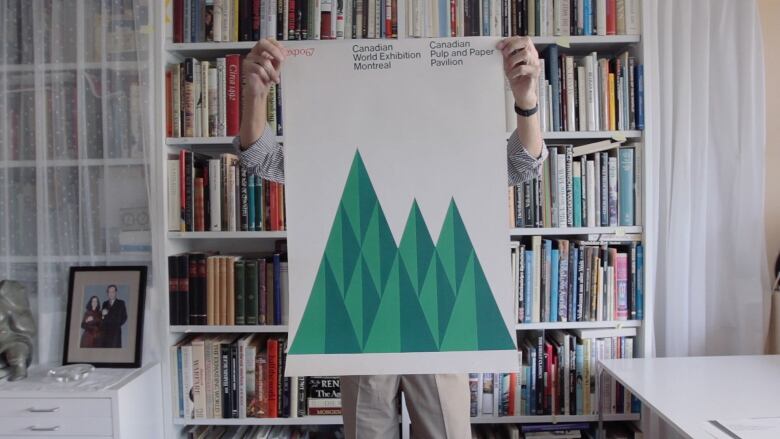It's the untold story of the images that shaped Canada's identity — and it's not just for design nerds
If it reaches its Kickstarter target, Design Canada will debut this fall

Most of us don't think about who drew up our transit maps, or bank logos or even the Canadian flag, but that's where a designer might differ.
Greg Durrell is a Vancouver-based graphic designer whose firm, Hulse & Durrell, has created branding for clients including the Canadian Olympic Team. So when he sees logos for CN, Air Canada, NFB — even CBC — they're things of beauty. Since his student days, he's wanted to learn the stories behind made-in-Canada symbols like those — icons that have endured for 50 years.

Online, he found next to nothing.
As for books? "There was no book."
Canada, he realized, hadn't recorded its own design history.
So five years ago, he decided he'd be the guy to do it.
The result is a documentary called Design Canada, and to make it happen, the first-time director has partnered with producers Jessica Edwards and Gary Hustwit. (Hustwit directed 2007's Helvetica, arguably the only design documentary most people can name).
A Kickstarter campaign to fund the project's post-production expenses went live on February 28. Seeking $80,000, more than $56,000 had been pledged as of writing.
Durrell's not the only frustrated designer/history nerd out there. Just last summer, Adrian Jean — past president of the Society of Graphic Designers of Canada — launched a campaign to reprint CBC's 1974 design manual. He was motivated by the same vacuum of resources, and a Kickstarter to fund the book went live just today. But where that project zeroes in on just one vintage case study, Durrell's zooms out on an entire era.

The film features interviews with more than two dozen of his design heroes from the '60s and '70s, including Burton Kramer and the late Massimo Vignelli. In most cases, he chased them down through the phone book, going into the interviews cold. (Nobody's ever recorded the history of Canadian graphic design, remember.)
The film is more than a passion project, he says.
"I truly believe this film is bigger than design, although it is about symbols and logos and flags. These things have a deeper significance and meaning than we typically think about," says Durrell.
His argument: all those "symbols and logos and flags" that we've been seeing since the '60s have influenced how we think of ourselves as Canadians. They've lasted for a reason, and this project will explore why.




To make its point, the film promises a history lesson on the era, as it unpacks the origin stories behind symbols such as the maple leaf or the Canada wordmark. It was the time of Expo '67, the Centennial, but also the FLQ Crisis.
If you were a designer working in the country, "you were really in the right place at the right time," says Durrell. "There really was this need and this pressure to create symbols and icons that would speak to all of Canada."
They wound up speaking to the rest of the world, too. As Massimo Vignelli states in one film interview, "the best graphic design in the '60s was coming out of Canada" — and yet, if you're making a list of the most Canadian things ever, "design" isn't exactly top of mind.


Canadian designers weren't the best because they invented a new aesthetic. Rather, they produced strong examples of modernist work. It's simple, clean, influenced by geometry.
According to Durrell, the thing that made Canada an industry leader was intrinsic to its emerging identity. We had a new, "forward-thinking immigration policy," and welcomed top designers coming from post-war Europe and the United States.
"This is a story about immigration," he says of the film. "With immigration being such a hot topic right now, I think this is an area we can absolutely celebrate. It has set us apart in the world a little bit."

If they reach their Kickstarter goal, the film will premiere this fall, and Durrell has ambitions to bring the movie across the country, though the project will need a presenting partner to make that happen. "We'd like to tour this thing like a rock band," he says, with screenings, Q&As, workshops and even an exhibition of artifacts seen in the film.
"Our backers have been a lot from the design community," says Durrell. "It would be really exciting if we can try and begin to get this conversation and get general Canadians from coast to coast to coast excited about this project as well because I think it's just as relevant to them as it is someone who's a graphic designer."
Learn more about Design Canada's Kickstarter project on the site. The campaign closes March 30.
